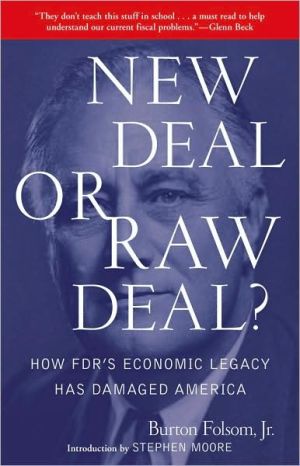Peace Process: American Diplomacy and the Arab-Israeli Conflict since 1967
Updated through the first term of President George W. Bush, the latest edition of this classic work analyzes how each U.S. president since Lyndon Johnson has dealt with the complex challenge of Arab-Israeli peacemaking. Written especially for classroom use, Peace Process is also an invaluable resource for policymakers and anyone interested in this vital region of the world.\ Copub: Brookings\ Institution
Search in google:
"A masterful study of American diplomacy. Quandt's cogent analysis of the role of crises in defining the agenda for a succession of American presidents is built on new and original evidence. Peace Process is must reading for anyone interested in the Middle East and American foreign policy. It is an enduring study of American leadership in a troubled and important part of the world."—JaBérénice Gross Stein, University of Toronto "Essential reading for those engaged or interested in the present Israeli-Arab peace talks."—Ambassador Itamar Rabinovich, Embassy of Israel, Washington, D.C. "Just the right mix of good, old-fashioned narrative diplomatic history and insightful interpretation. The book truly illuminates American foreign policy regarding the Arab-Israeli conflict, but at the same time it offers thoughtful analysis and interpretation of what diplomacy and American policy is all about."—L. Carl Brown, Princeton University PRAISE FOR THE PREVIOUS EDITIONS: "Clearly written, carefully balanced and comprehensive in scope.... Should prove invaluable to all serious students of American foreign policy."—New York Times Book Review "A major work, whether judged by the standards of classical diplomatic history or modern political science."—Foreign Affairs "Provides fresh insights into the complexities of creating the process and defining the substance of American foreign policymaking."—Survival Booknews Quandt is a senior fellow in the Foreign Policy Studies program at the Brookings Institution and was a member of the National Security Council staff during the Nixon and Carter administrations. He provides a detailed account of American policy toward the Arab-Israeli conflict, assessing each administration's initial approach to the problem of peacemaking since 1967 and the evolution of policy. Co- published with the Brookings Institution. Paper edition (unseen), $15.95. Annotation c. Book News, Inc., Portland, OR (booknews.com)
Peace Process\ American Diplomacy and the Arab-Israeli Conflict since 1967 \ \ By William B. Quandt \ Brookings Institution Press\ Copyright © 2005 Brookings Institution Press and the University of California Press\ All right reserved. \ ISBN: 0-520-24631-4 \ \ \ Chapter One\ Introduction \ Sometime in the mid-1970s the term peace process began to be widely used to describe the American-led efforts to bring about a negotiated peace between Israel and its Arab neighbors. The phrase stuck, and ever since it has been synonymous with the gradual, step-by-step approach to resolving one of the world's most difficult conflicts.\ In the years since 1967 the emphasis in Washington has shifted from the spelling out of the ingredients of "peace" to the "process" of getting there. This procedural bias, which frequently seems to characterize American diplomacy, reflects a practical, even legalistic side of American political culture. Procedures are also less controversial than substance, more susceptible to compromise, and thus easier for politicians to deal with. Much of U.S. constitutional theory focuses on how issues should be resolved -the process-rather than on substance-what should be done.\ Yet whenever progress has been made toward Arab-Israeli peace through American mediation, there has always been a joining of substance and procedure. The United States has provided both a sense of direction and a mechanism. That, at its best, is what the "peace process" has been about. At worst, it has been little more than a slogan used to mask the marking of time.\ The Pre-1967 Stalemate\ The stage was set for the contemporary Arab-Israeli peace process by the 1967 Six-Day War. Until then, the conflict between Israel and the Arabs had seemed almost frozen, moving neither toward resolution nor toward war. The ostensible issues in dispute were still those left unresolved by the armistice agreements of 1949. At that time, it had been widely expected that those agreements would simply be a step toward final peace talks. But the issues in dispute were too complex for the many mediation efforts of the early 1950s, and by the mid-1950s the cold war rivalry between Moscow and Washington had left the Arab-Israeli conflict suspended somewhere between war and peace. For better or worse, the armistice agreements had provided a semblance of stability from 1949 to 1967.\ During this long truce the Israelis had been preoccupied with questions of an existential nature. Would the Arabs ever accept the idea of a Jewish state in their midst? Would recognition be accompanied by security arrangements that could be relied on? Would the Arabs insist on the return of the hundreds of thousands of Palestinian refugees who had fled their homes in 1948-49, thereby threatening the Jewishness of the new state? And would the Arabs accept the 1949 armistice lines as recognized borders, or would they insist on an Israeli withdrawal to the indefensible lines of the 1947 United Nations partition agreement? As for tactics, would Israel be able to negotiate separately with each Arab regime, or would the Arabs insist on a comprehensive approach to peacemaking? Most Israelis felt certain that the Arabs would not provide reassuring answers to these questions and therefore saw little prospect for successful negotiations, whether with the conservative monarchs or with the new brand of nationalistic army officers.\ From the Arab perspective, the conflict also seemed intractable, but the interests of existing regimes and the interests of the Palestinians, who had lost most from the creation of Israel, were by no means identical. The regimes struck the pose of defending the rights of the Palestinians to return to their homes or to be compensated for their losses. They withheld recognition from the Jewish state, periodically engaging in furious propaganda attacks against the "Zionist entity." The more militant Arabs sometimes coupled their harsh rhetoric with support for guerrilla attacks on Israel. But others, such as Jordan and Lebanon, were fairly content with the armistice arrangements and even maintained under-the-table contacts with the Israelis. "No war, no peace" suited them well.\ The Palestinians, not surprisingly, used all their moral and political capital to prevent any Arab regime from recognizing the Jewish state, and by the mid-1950s they had found a champion for their cause in Egypt's president Gamal Abdel Nasser. From that point on, Arab nationalism and the demand for the restoration of Palestinian rights were Nasser's most potent weapons as he sought to unify the ranks of the Arab world. But Nasser also sought to steer a course between war and peace, at least until the momentous days of May 1967. Then, as tensions rose, Palestinian radicals, who had hoped to draw the Arab states into conflict with Israel on their behalf, rallied to Nasser's banner and helped to cut off any chance that he might retreat from the brink to which he had so quickly advanced.\ The 1967 Watershed\ The 1967 war transformed the frozen landscape of the Arab-Israeli conflict in dramatic ways. Israel revealed itself to be a military power able to outmatch all its neighbors. By the end of the brief war, Israel was in control of the Sinai desert; the West Bank of the Jordan River, including all of East Jerusalem; Gaza, with its teeming refugee camps; and the strategically important Golan Heights. More than a million Palestinians came under the control of the Israeli military, creating an acute dilemma for Israel. None of the post- 1921 British mandate of Palestine was now free of Israeli control. If Israel kept the newly conquered land and granted the people full political rights, Israel would become a binational state, which few Israelis wanted. If it kept the land but did not grant political rights to the Palestinians, it would come to resemble other colonial powers, with predictable results. Finally, if Israel relinquished the land, it would retain its Jewish character, but could it live in peace and security? These were the alternatives debated within the fractious, often boisterous Israeli democracy.\ Given the magnitude of their victory in the 1967 war, some Israelis seemed to expect right afterward that the Arabs would have no option but to sue for peace. But that did not happen. So, confident of its military superiority and assured of American support, Israel decided to wait for the Arabs to change their position. But what would happen to the occupied territories while Israel waited? Would they be held in trust, to be traded for peace and security at some future date? Or would they gradually and selectively be incorporated into Israel, as the nationalists on the right demanded? East Jerusalem, at least, would not be returned, and almost immediately Israel announced the unilateral expansion of the municipal boundaries and the annexation of the Arab-inhabited parts of the city. Palestinians living in Jerusalem would have the right to become Israeli citizens, but few took up the offer. Israel signaled its willingness to return most of the occupied territories, apart from Jerusalem, although the passage of time and changing circumstances gradually eroded that position.\ The 1967 war was a shock to Arabs who had believed Nasser could end their sense of weakness and humiliation at the hands of the West. Indeed, although Nasser lived on for another three years after the war, his prestige was shattered. Arab nationalism of the sort he preached would never again be such a powerful force. Instead, regimes came to look more and more after their own narrow interests, and the Palestinians followed suit by organizing their own political movement, free of control by any Arab government. One of the few dynamic developments in the Arab world after the 1967 war was the emergence of a new generation of Palestinians leading the fight for their rights.\ The Palestine Liberation Organization (PLO), originally supported by Arab regimes to keep the Palestinians under control, quickly became an independent actor in the region. It symbolized the hopes of many Palestinians and caused much concern among established Arab regimes, which were not used to seeing the Palestinians take matters into their own hands.\ In theory, these changes in the Arab world might have opened the way for an easing of the Arab-Israeli conflict. A certain amount of self-criticism took place in Arab intellectual circles. Political realism began to challenge ideological sloganeering. But no one made any serious peace effort immediately after the 1967 war, and by September of that year the Arab parties had all agreed there would be no negotiations with Israel, no peace, and no recognition. Once again, "neither war nor peace" seemed to be a tolerable prospect for both Arabs and Israelis.\ The Need for a Mediator\ With the parties to the conflict locked into mutually unacceptable positions, the chance for diplomatic movement seemed to depend on others, especially the United States. Because of the close U.S.-Israeli relationship, many Arabs looked to Washington to press Israel for concessions. The example of President Dwight D. Eisenhower, who had pressed Israel to relinquish its gains from the Suez war of 1956, was still a living memory. The two main areas of Arab concern were the return of territories seized in the 1967 war and some measure of justice for the Palestinians. In return, it was implied, something short of peace would be offered to Israel, perhaps an end to belligerency or strengthened armistice arrangements.\ The Arab regimes were still reluctant to promise full peace and recognition for Israel unless and until the Palestinians were satisfied, and that would require more than Israeli withdrawal from occupied territories. As time went by, and the PLO gained in prestige, it became more and more difficult for the Arab states to pursue their narrowly defined interests with no regard for Palestinian claims. And the Arabs were reluctant to deal directly with Israel. If a deal were to be struck, it would be through the efforts of the two superpowers-the United States and the Soviet Union-and the United Nations.\ By contrast, Israel was adamant that territory would not be returned for less than peace, recognition, and security. And the means for getting to a settlement would have to include direct negotiations with Israel by each Arab party. For most Israelis, the claims of the Palestinians were impossible to deal with. At best, Jordan could act as a stand-in for the Palestinians, who would have to be satisfied with some form of internationally supported rehabilitation and compensation scheme. Above all, Palestinians would not be allowed to return to their homes, except in very special circumstances of family reunions and in very small numbers.\ American Ambivalence: Positions and Policies\ Confronted with these almost contradictory positions, the United States was reluctant to get deeply involved in Arab-Israeli diplomacy. The Vietnam War was still raging in 1967, and the needs of the Middle East seemed less compelling than the daily demands of a continuing war in Southeast Asia. Still, from the outset the United States staked out a position somewhere in between the views of Israelis and Arabs. Israel, it was believed, was entitled to more than a return to the old armistice arrangements. Some form of contractually binding end to the state of war should be achieved, and Israeli security concerns would have to be met. At the same time, if the Arabs were prepared to meet those conditions, they should recover most, if not all, of the territory lost in 1967. These views were spelled out by President Lyndon Johnson soon after the war, and they became the basis for UN Resolution 242 of November 22, 1967, which thereafter provided the main reference point, with all its ambiguities, for peacemaking.\ The basic American position adopted in 1967 has remained remarkably consistent. For example, each American president since 1967 has formally subscribed to the following points:\ -Israel should not be required to relinquish territories captured in 1967 without a quid pro quo from the Arab parties involving peace, security, and recognition. This position, summarized in the formula "land for peace" and embodied in UN Resolution 242, applies to each front of the conflict.\ -East Jerusalem is legally considered to be occupied territory whose status should eventually be settled in peace negotiations. Whatever its final political status, Jerusalem should not be physically redivided. Reflecting the legal American position on the city, the American embassy has remained in Tel Aviv, despite promises by many presidential candidates to move the embassy to Jerusalem.\ -Israeli settlements beyond the 1967 armistice lines-the "green line"-are obstacles to peace. Until 1981 they were considered illegal under international law, but the administration of Ronald Reagan reversed position and declared they were not illegal. But Reagan, and especially George Bush, continued to oppose the creation of settlements. No American funds are to be used by Israel beyond the green line.\ -However Palestinian rights may eventually be defined, they do not include the right of unrestricted return to homes within the 1967 lines, nor do they entail the automatic right of independence. All administrations have opposed the creation of a fully independent Palestinian state, preferring, at least until the mid-1990s, some form of association of the West Bank and Gaza with Jordan. Over time, however, the Jordan option-the idea that Jordan should speak for the Palestinians-has faded, and since 1988 the United States has agreed to deal directly with Palestinian representatives.\ -Israel's military superiority, its technological edge against any plausible coalition of Arab parties, has been maintained through American military assistance. Each U.S. administration has tacitly accepted the existence of Israeli nuclear weapons, with the understanding that they will not be brandished and can be regarded only as an ultimate deterrent, not as a battlefield weapon. American conventional military aid is provided, in part, to ensure that Israel will not have to rely on its nuclear capability for anything other than deterrence.\ With minor adjustments, every president from Lyndon Johnson to Bill Clinton has subscribed to each of these positions. They have been so fundamental that they are rarely even discussed. To change any one of these positions would entail costs, both domestic and international. These positions represent continuity and predictability. But they do not always determine policy. Policy, unlike these positions, is heavily influenced by tactical considerations, and here presidents and their advisers differ with one another, and sometimes with themselves, from one moment to the next.\ Policies involve judgments about what will work.\ Continues... \ \ \ \ Excerpted from Peace Process by William B. Quandt Copyright © 2005 by Brookings Institution Press and the University of California Press . Excerpted by permission.\ All rights reserved. No part of this excerpt may be reproduced or reprinted without permission in writing from the publisher.\ Excerpts are provided by Dial-A-Book Inc. solely for the personal use of visitors to this web site. \ \
Preface to the Third Edition 1. Introduction PART ONE: THE JOHNSON PRESIDENCY 2. Yellow Light: Johnson and the Crisis of May-June 1967 PART TWO: THE NIXON AND FORD PRESIDENCIES 3. Cross-Purposes: Nixon, Rogers, and Kissinger, 1969-72 4. Kissinger's Diplomacy: Stalemate and War, 1972-73 5. Step by Step: Kissinger and the Disengagement Agreements, 1974-76 PART THREE: THE CARTER PRESIDENCY 6. Ambition and Realism: Carter and Camp David, 1977-78 7. Forging Egyptian-Israeli Peace PART FOUR: THE REAGAN AND BUSH PRESIDENCIES 8. Cold War Revival: Who's in Charge? 9. Back to Basics: Shultz Tries Again 10. Getting to the Table: Bush and Baker, 1989-92 PART FIVE: THE CLINTON PRESIDENCY 11. Clinton the Facilitator 12. Clinton's Finale: Distractions, Hesitation, and Frustration PART SIX: THE SECOND BUSH PRESIDENCY 13. "With Us or Against Us": The Warrior President in His First Term PART SEVEN: CONCLUSION 14. Challenges Facing Future Administrations Notes Bibliography Index
\ BooknewsQuandt is a senior fellow in the Foreign Policy Studies program at the Brookings Institution and was a member of the National Security Council staff during the Nixon and Carter administrations. He provides a detailed account of American policy toward the Arab-Israeli conflict, assessing each administration's initial approach to the problem of peacemaking since 1967 and the evolution of policy. Co- published with the Brookings Institution. Paper edition (unseen), $15.95. Annotation c. Book News, Inc., Portland, OR (booknews.com)\ \








